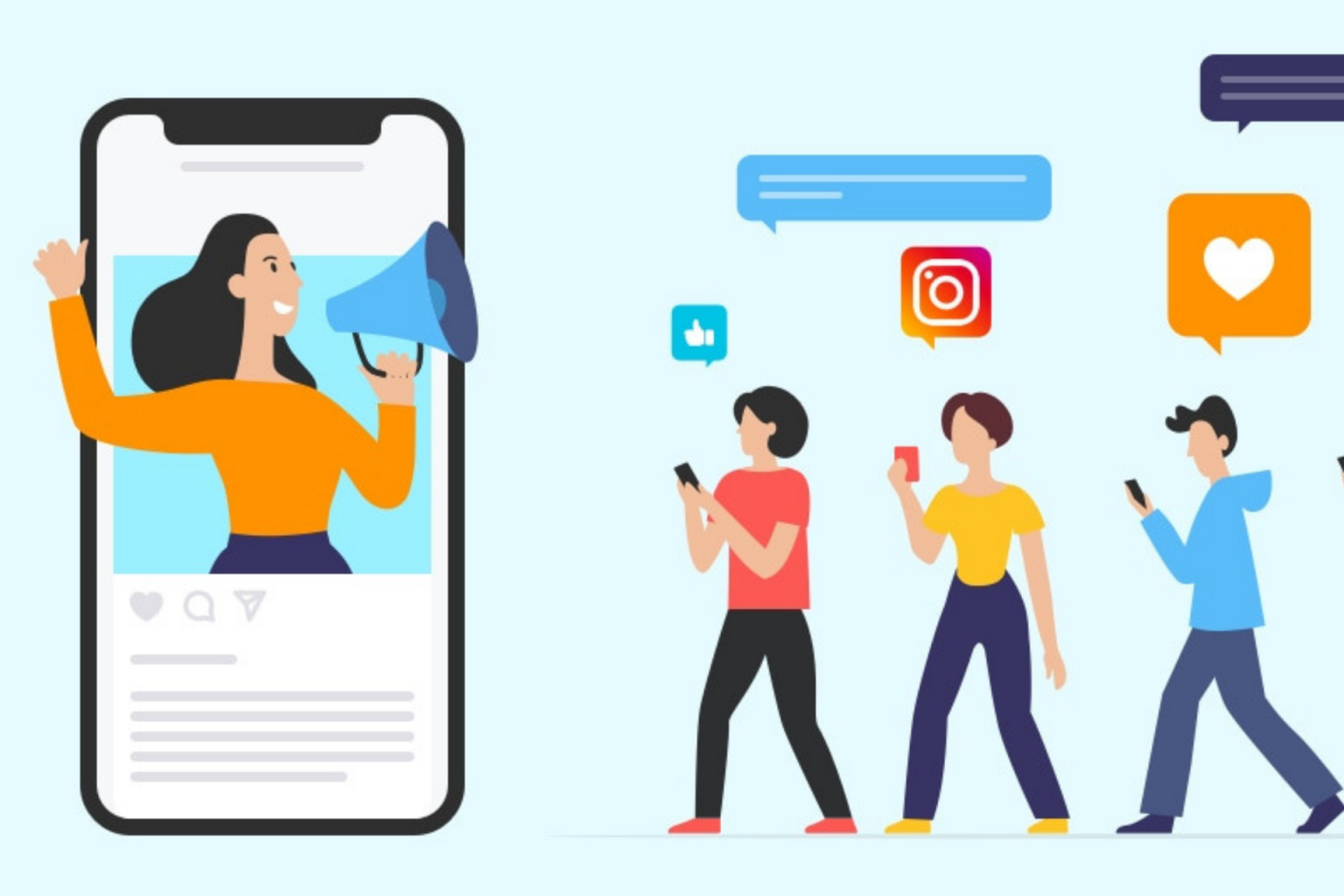In the age of social media dominance, businesses are constantly seeking innovative ways to connect with their audiences. Enter influencer marketing, a strategy that leverages the popularity and reach of social media personalities to promote products and services. But what is influencer marketing? How does it work, and why is it so effective? Let’s explore this modern marketing phenomenon in depth.
What Is Influencer Marketing?
Influencer marketing is a type of marketing that involves collaborating with individuals who have a significant online following and influence over their audience. These individuals, known as influencers, use their platforms to share content that promotes your brand, driving awareness, engagement, and conversions.
Influencers often operate on platforms like Instagram, YouTube, TikTok, and blogs, creating authentic connections with their followers. By leveraging their influence, businesses can tap into new markets, boost brand credibility, and foster trust.
Why Is Influencer Marketing So Popular?
- Authenticity: Influencers have built trust with their followers, making their recommendations more credible than traditional ads.
- Targeted Reach: You can collaborate with influencers whose audience aligns perfectly with your target demographic.
- Cost-Effectiveness: Influencer marketing often delivers better ROI than traditional advertising methods.
How Influencer Marketing Works
Understanding the mechanics of influencer marketing is essential to making it work for your brand. Here’s a step-by-step breakdown:
1. Identify Your Goals
Before diving into influencer marketing, define your objectives. Are you looking to:
- Increase brand awareness?
- Drive website traffic?
- Boost sales?
- Promote a specific product or service?
2. Find the Right Influencers
Not all influencers are created equal. Consider:
- Relevance: Do they align with your brand values and industry?
- Engagement Rate: How actively do their followers interact with their content?
- Audience Demographics: Is their audience similar to your target market?
3. Develop a Collaboration Strategy
Once you’ve identified potential influencers, outline the type of collaboration:
- Sponsored posts
- Product reviews
- Giveaways and contests
- Affiliate marketing
4. Create Compelling Content
Work with influencers to craft authentic and engaging content. Trust their creative expertise, as they know what resonates with their audience.
5. Monitor and Analyze Results
Track metrics like engagement rate, website traffic, and sales conversions to measure the success of your campaign. Tools like Google Analytics and platform-specific insights are invaluable.
Types of Influencers
Influencers come in all shapes and sizes. Depending on your goals, you can work with:
1. Mega-Influencers
- Follower Count: Over 1 million
- Platforms: Instagram, YouTube, TikTok
- Best For: Global reach and brand awareness campaigns
2. Macro-Influencers
- Follower Count: 100,000 to 1 million
- Platforms: Instagram, YouTube, blogs
- Best For: Broad audience targeting with a balance of reach and engagement
3. Micro-Influencers
- Follower Count: 10,000 to 100,000
- Platforms: Instagram, niche blogs
- Best For: Highly targeted campaigns with higher engagement rates
4. Nano-Influencers
- Follower Count: Under 10,000
- Platforms: Instagram, TikTok, niche communities
- Best For: Local businesses and niche markets
Benefits of Influencer Marketing
So, what is influencer marketing capable of achieving? Let’s look at its key benefits:
1. Increased Brand Awareness
Collaborating with influencers introduces your brand to their audience, expanding your reach.
2. Improved Trust and Credibility
Consumers are more likely to trust recommendations from people they follow and admire.
3. Enhanced Content Creation
Influencers create unique, high-quality content that you can repurpose across your marketing channels.
4. Better ROI
With the right strategy, influencer marketing can deliver higher returns than many traditional advertising methods.
5. Access to Niche Markets
Nano- and micro-influencers allow brands to connect with highly specific audiences.
Challenges in Influencer Marketing
Despite its advantages, influencer marketing comes with challenges:
- Finding Authentic Influencers: Spotting genuine influencers with real followers takes effort.
- Budget Management: Balancing influencer fees and campaign ROI can be tricky.
- Monitoring Campaign Performance: Tracking and analyzing results requires time and the right tools.
Pro Tips for Successful Influencer Marketing Campaigns
Want to maximize your influencer marketing efforts? Here are some expert tips:
1. Focus on Authenticity
Choose influencers whose personal brand aligns with your values. Authenticity builds trust and credibility.
2. Prioritize Engagement Over Followers
An influencer with a smaller but highly engaged audience can deliver better results than a mega-influencer with low engagement.
3. Leverage Multiple Platforms
Don’t limit yourself to one platform. Collaborate with influencers across Instagram, YouTube, TikTok, and blogs for broader reach.
4. Set Clear Expectations
Clearly outline campaign goals, deliverables, and timelines to avoid misunderstandings.
5. Use Affiliate Marketing
Incorporate affiliate links to track conversions and reward influencers based on performance.
The Future of Influencer Marketing
Influencer marketing is evolving rapidly, with trends shaping its future:
- AI-Powered Influencers: Virtual influencers are gaining popularity.
- Long-Term Partnerships: Brands are shifting towards building lasting relationships with influencers.
- Focus on Niche Communities: Targeting smaller, highly engaged audiences is becoming more effective.
Related Post:- What Is SEO?



